Key takeaways
- Kahoot enhances student engagement by transforming assessments into interactive, game-like experiences that make learning relevant and enjoyable.
- The platform fosters inclusivity, allowing quieter students to participate confidently without the pressure of traditional hand-raising methods.
- Real-time feedback through Kahoot helps educators address misunderstandings immediately, making teaching more responsive and effective.
- Balancing question difficulty and pacing is crucial to ensure that all students remain engaged without feeling overwhelmed during assessments.
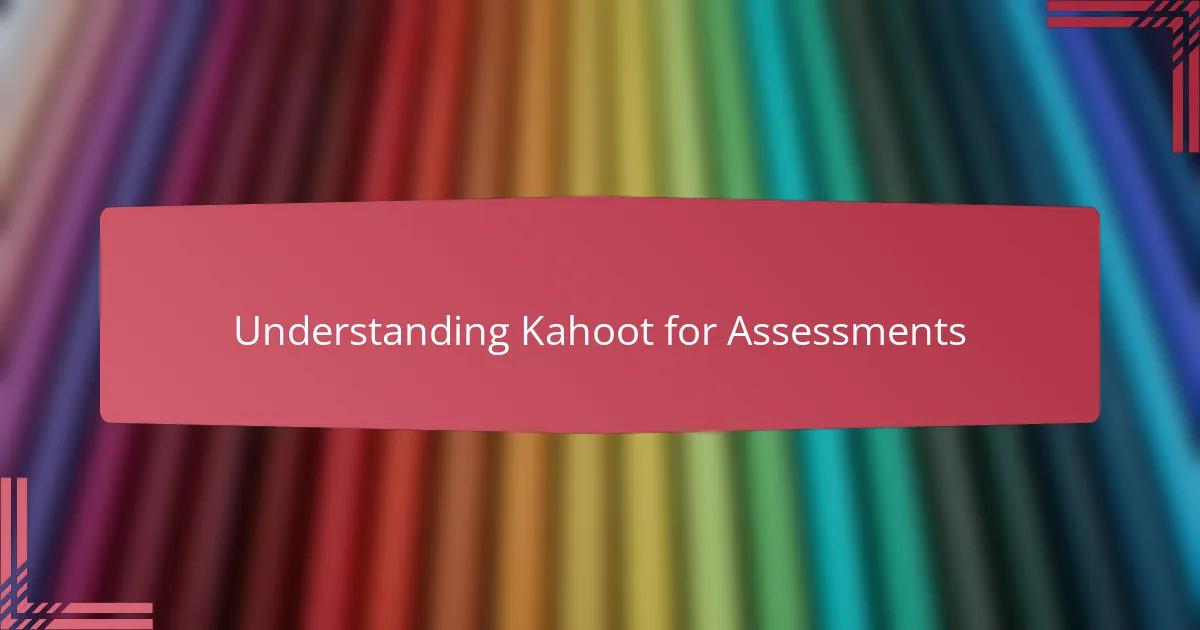
Understanding Kahoot for Assessments
Kahoot, at its core, is an interactive quiz platform that transforms traditional assessments into lively, game-like experiences. I remember the first time I used it—I was skeptical about whether a fun quiz could truly measure my students’ understanding, but quickly realized it fostered genuine engagement. Have you ever wondered if assessments could be both effective and enjoyable? Kahoot answers that question in a surprisingly positive way.
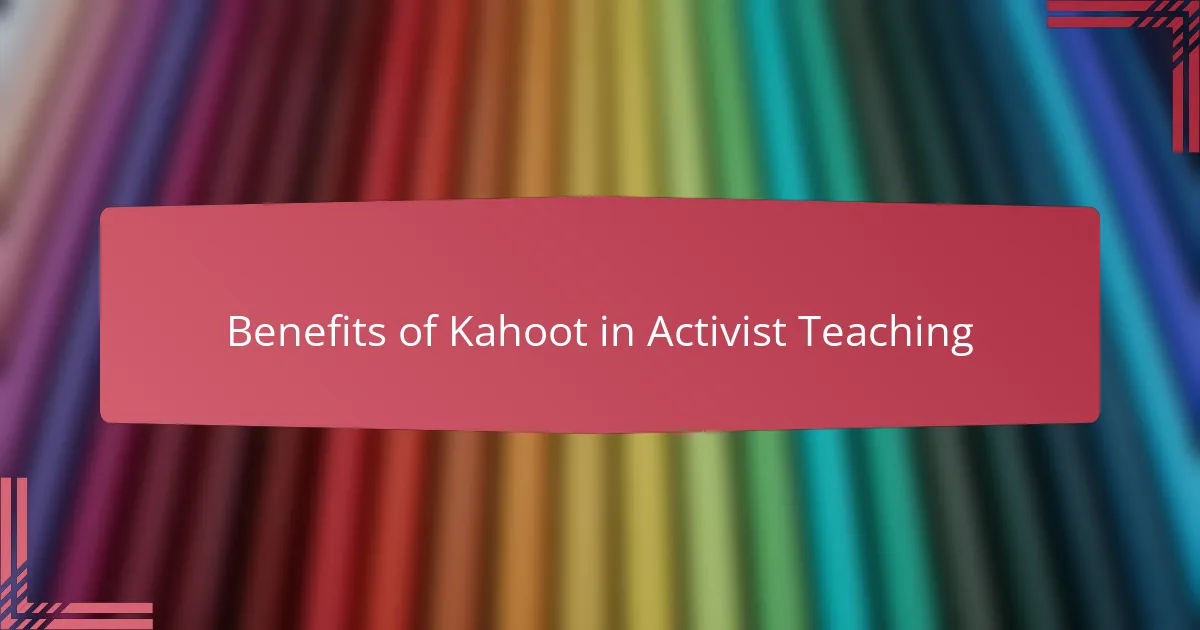
Benefits of Kahoot in Activist Teaching
What I’ve found most rewarding about using Kahoot in activist teaching is how it sparks student voices in a way traditional tests often miss. When students buzz in their answers, it’s more than just trivia—they’re actively participating in topics that matter, which makes the learning feel immediate and relevant. Have you noticed how engagement shifts when learners see their ideas valued in real time?
Another benefit is how Kahoot encourages critical thinking around social justice issues, rather than rote memorization. I once ran a quiz on climate activism, and the conversations that followed were much richer because students had just wrestled with key facts interactively. It felt less like a test, and more like a stepping stone to deeper understanding.
I also appreciate how Kahoot’s format levels the playing field, giving quieter students a chance to shine without the pressure of raising their hand. This inclusivity is crucial in activist classrooms where every voice should be heard. Isn’t it powerful when technology helps us build more equitable learning spaces? I certainly think so, based on my experience.
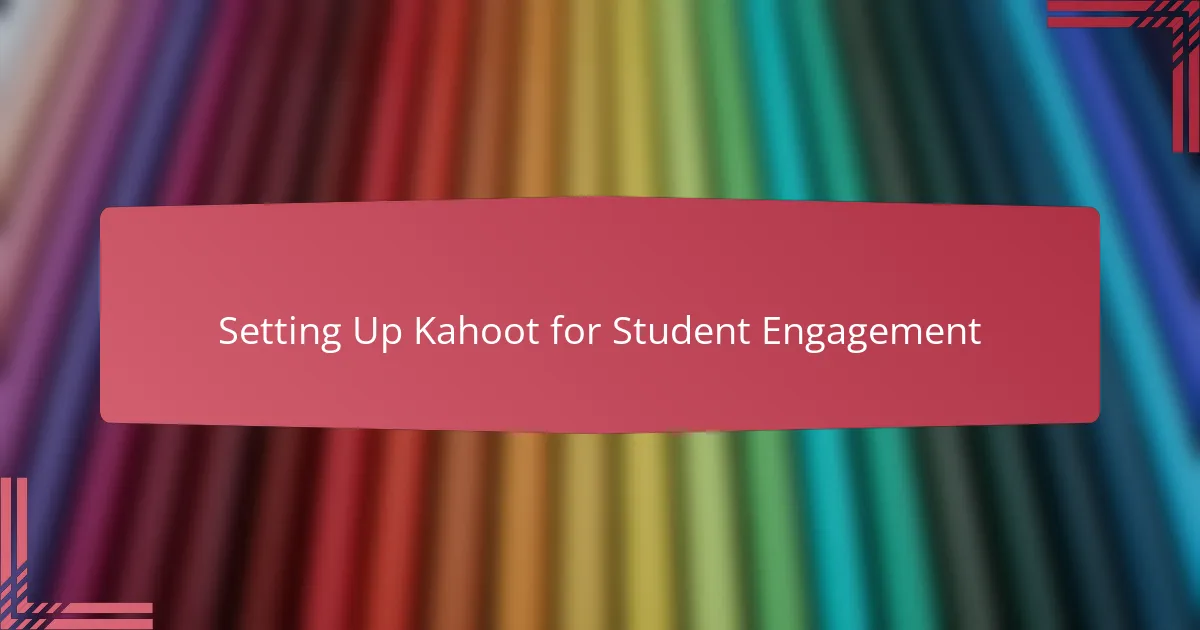
Setting Up Kahoot for Student Engagement
Getting Kahoot ready for my students always starts with choosing or creating quizzes that resonate with their interests and the issues we’re passionate about. I’ve learned that tailoring questions to real-world activist topics not only grabs their attention but also signals that their learning has real purpose. Have you ever noticed how relevant content makes students lean in closer?
I set up the game so there’s room for quick thinking but also discussion—timing the questions just right to keep the momentum without causing stress. The first time I did this, the energy in the room shifted palpably; students weren’t just answering, they were racing to voice what they knew and debate what they wondered about. That balance between excitement and reflection is where Kahoot shines for me.
Another trick I’ve found helpful is introducing Kahoot through a warm-up round that’s low stakes and fun. This eases any tech anxiety and sparks curiosity. I recall one shy student who, after a playful warm-up, suddenly became one of the most confident participants. Isn’t it amazing how a little setup can transform engagement so dramatically?
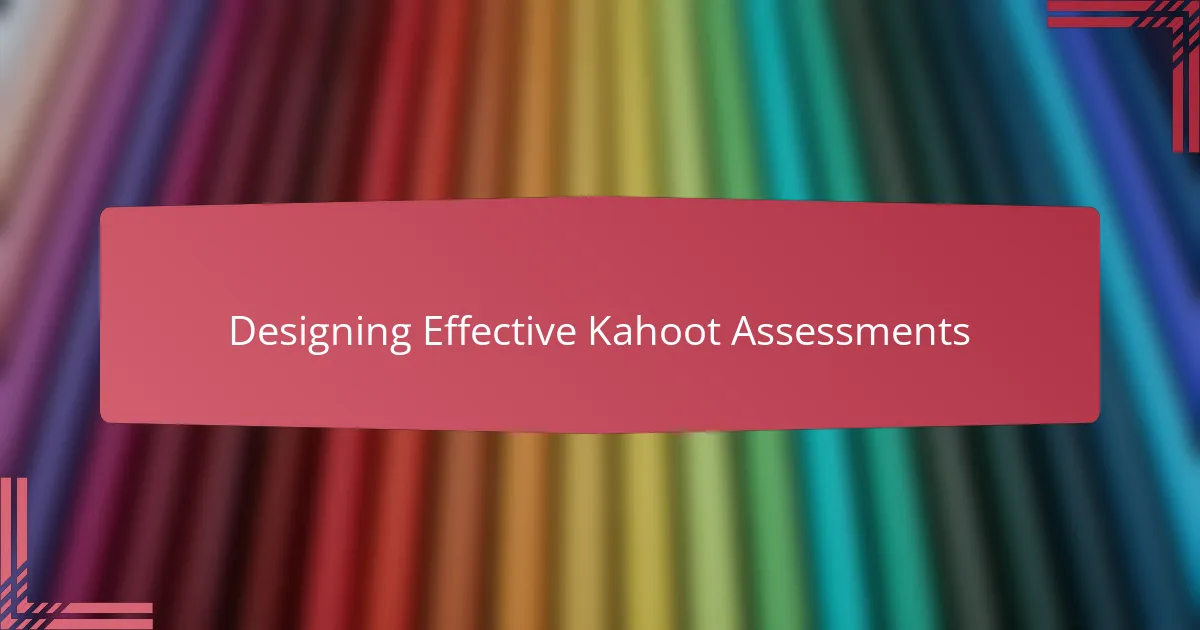
Designing Effective Kahoot Assessments
Designing Kahoot assessments has taught me the importance of crafting questions that challenge students without overwhelming them. I remember once creating a quiz that was too easy—it didn’t spark the discussions I hoped for. How often do we underestimate the power of well-balanced questions to push critical thinking while keeping the game’s energy alive?
I also focus on mixing question types and incorporating open-ended prompts when possible. This variety invites learners to reflect, not just recall facts. One memorable session involved a question that asked students to consider the impact of a social policy; their thoughtful responses afterward revealed deeper understanding than any multiple-choice question alone could capture.
Timing is another factor I’ve come to respect deeply. Allowing enough seconds for thought, but not so much that the pace drags, feels like a delicate dance. When I get that rhythm right, I notice a real shift—students are engaged and eager, but also thoughtful, making the assessment feel less like a test and more like a meaningful exchange. Have you noticed that too?
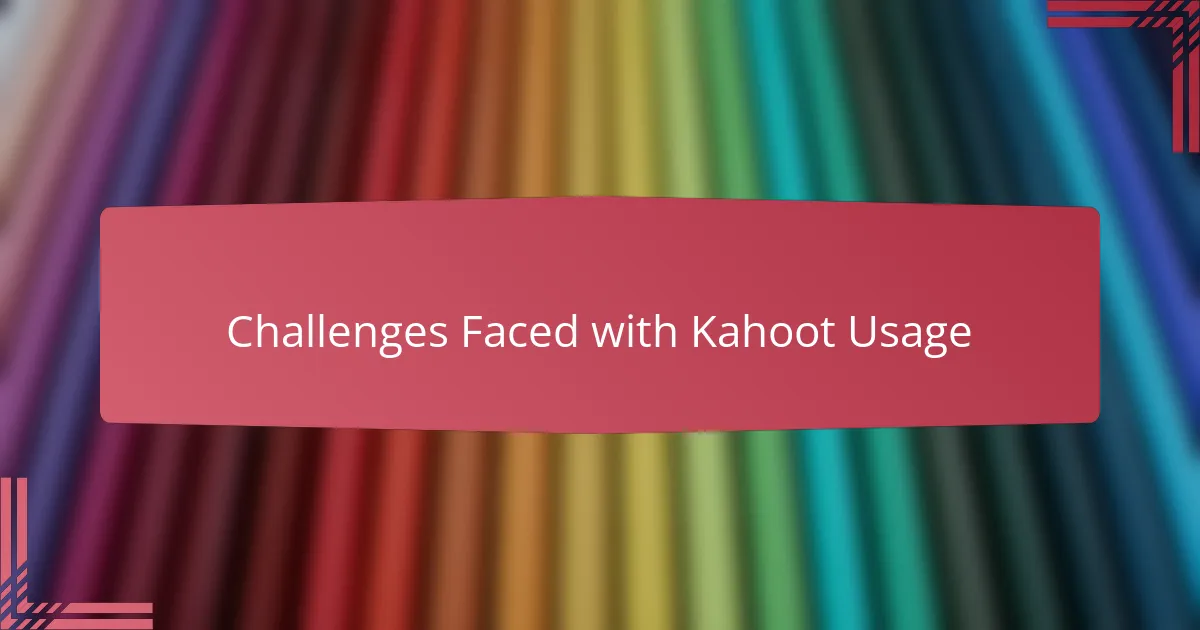
Challenges Faced with Kahoot Usage
One challenge I quickly ran into with Kahoot was the tech glitches—sometimes the platform would freeze or students would have trouble logging in. It was frustrating watching engagement dip because of these hiccups, making me wonder how much the flow of learning suffers when the tool isn’t seamless. Have you ever felt your momentum break because of a simple connectivity issue?
Another hurdle was balancing the competitive vibe Kahoot naturally creates with fostering a supportive environment. I noticed some students felt left behind or discouraged when they weren’t the fastest to answer, which made me question how to keep the fun without sacrificing inclusivity. How do we ensure that every student feels valued, even when they aren’t buzzing in first?
Finally, crafting questions that are both meaningful and suited to the fast-paced format proved tricky. Sometimes, important topics needed deeper reflection, but Kahoot’s timed settings pushed for quick answers. I found myself constantly tweaking not just the questions but also the time limits, striving to make the assessments thought-provoking without overwhelming the students. Have you tried finding that sweet spot between depth and speed?
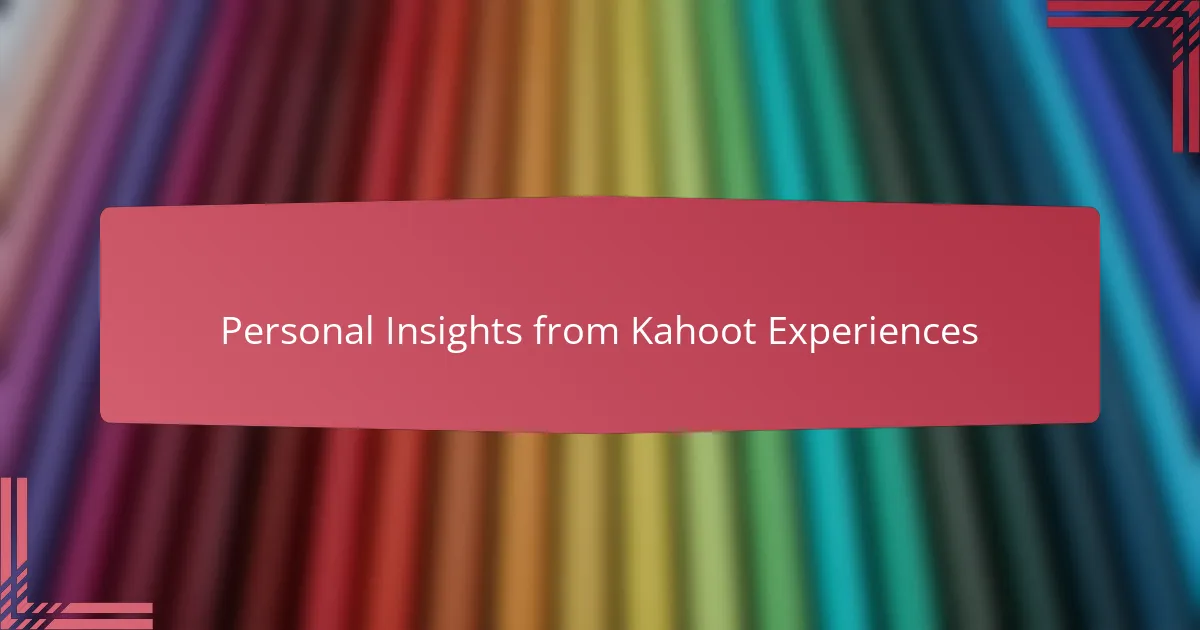
Personal Insights from Kahoot Experiences
One insight that stuck with me is how Kahoot transforms assessment stress into excitement. I recall a particular class where a usually anxious student surprised everyone by eagerly pressing the buzzer first, beaming with confidence. Have you ever witnessed a simple tool spark such a shift in a student’s attitude?
Another thing I’ve noticed is how the real-time feedback keeps me connected to my students’ understanding in the moment. When a surprising number get a question wrong, it’s a clear sign for me to pause and unpack the concept rather than just moving on. Doesn’t that immediacy make teaching feel more responsive and alive?
Yet, I’ve also learned to be cautious—not every student thrives under the rapid pace Kahoot demands. I’ve seen some kids feel overwhelmed when the timer ticks down too quickly, leading me to adjust timing based on the group. Striking that balance between challenge and support is tricky, but it’s essential for inclusive learning. Have you found yourself tweaking the experience to keep all learners engaged?
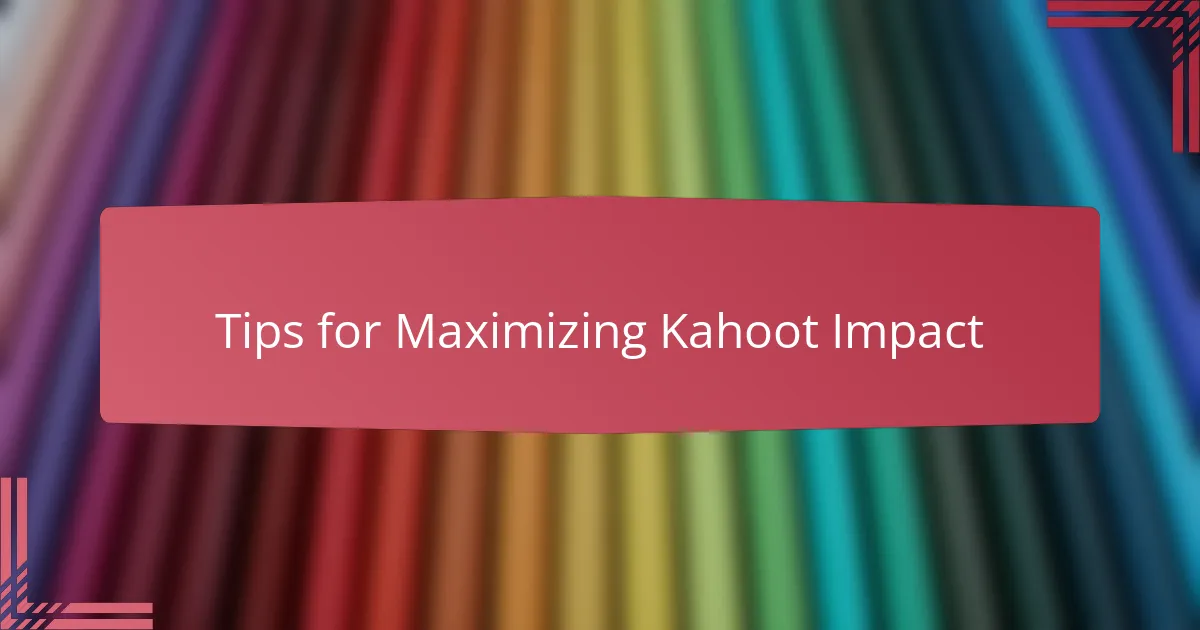
Tips for Maximizing Kahoot Impact
One tip I’ve found invaluable is to use Kahoot not just as a quiz but as a launchpad for discussion. After the game, I pause to explore students’ answers and thoughts, turning the assessment into a conversation. Have you noticed how this approach deepens understanding beyond the scoreboard?
I also make sure to diversify my question types, mixing straightforward facts with scenario-based or reflective queries. This keeps the energy dynamic and pushes critical thinking, rather than just recall. Sometimes, a well-placed open-ended question sparks the most meaningful dialogue, even in a timed game.
Finally, pacing is everything. I’ve learned to adjust the timer to fit my students’ comfort levels, especially for complex topics. When the rhythm feels right, students stay excited without feeling rushed or anxious. Isn’t it rewarding when technology helps balance challenge with support?